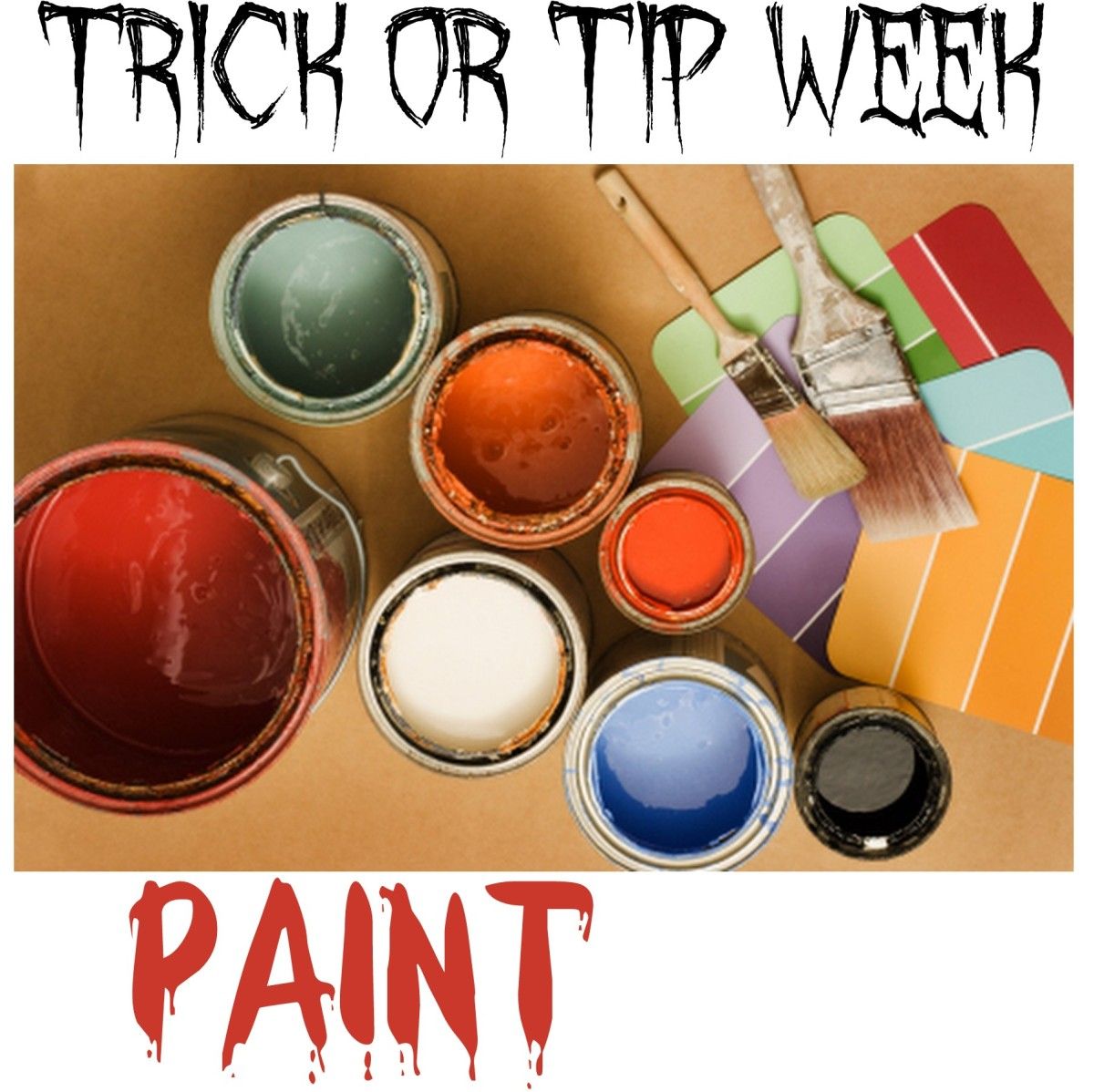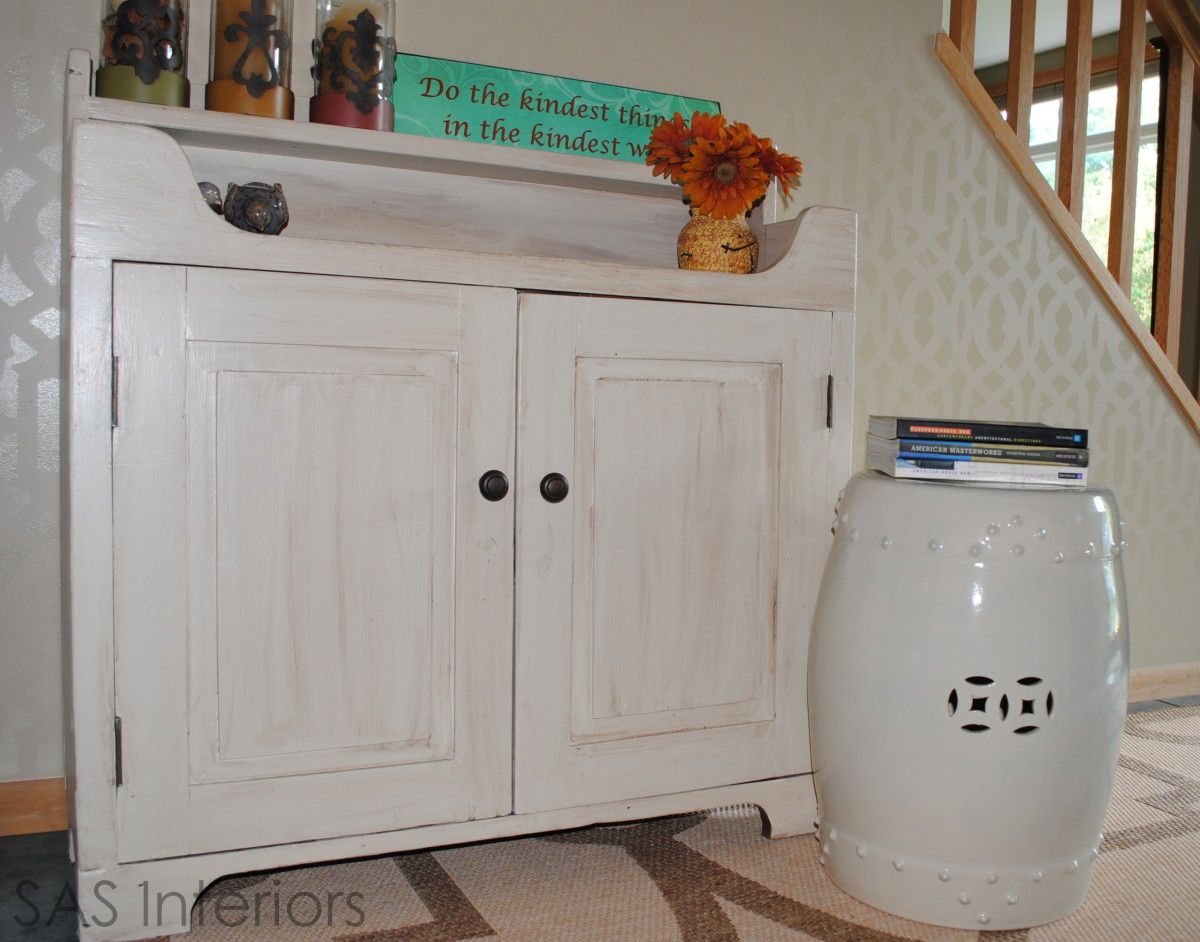Paint Tricks, Tips, and Techniques
I love PAINT! Whether it be regular paint, spray paint, or craft paint, paint can dramatically change and transform any room or piece of furniture. With my many painting endeavours, I have learned a few TIPS + TRICKS along the way, and now I want to share them with YOU!
TIP 1
There is never a time when you’re painting that you’ll be done with the brush or roller after your first coat. Either you need to take a break OR you are waiting for the paint to dry.
Before I discovered this all-time favorite paint trick, I washed my brush/roller with water EVERY TIME to avoid it from hardening. Then the next time I went to use the brush/roller, it was often still water logged and would make the paint runny – NOT GOOD! So here’s the trick (It’s SOOO easy) ~
1. Take a grocery store plastic bag
2. Put your brush or roller in the inside corner of the bag
3. Grab it from the outside and Twist
4. Secure it with a rubberband, clip, or simply twist it around and lay something on it.
Basically, you DO NOT want air getting to the brush, or it will harden.
NO JOKE – – I use this trick EVERY TIME. I’ve had brushes stay in bags for weeks when I haven’t gotten around to doing my final touch -ups (I know, crazy?!).
TIP 2
Another one of my favorite painting tricks is to use this formula to create a smooth and even painted finish.
This “magic potion”, Flood Floetrol, is a paint additive that will create a smooth, even finish, free of brush or roller strokes. I used it for the first time during my Kitchen Makeover and the results were amazing. And better yet, it’s less than $10 a bottle (depending on the size). I use this every time I paint.
One pet peeve of mine is buying something, only to discard it within a short amount of time. If it can be avoided, I’m all for it! Buying paint liners is a huge waste of money, but it’s easier than cleaning or throwing away a paint tray, right? Well here is a solution instead of wasting your hard earned money on paint liners – Use foil. It’s that easy! Line your paint tray with foil and throw it away when you’re done. This trick comes in especially handy when using multiple colors and changing paints often.
TIP 4
After you’ve poured your paint into your foil-lined paint tray, it’s typical for leftover paint (in a can) to get stuck in the rim. Then when you try to seal the lid, it splatters all over you and you’re left with an unsealed can, resulting in possible hardening. Here’s an easy trick! Wrap a paper towel around a screwdriver and clean around the rim of the can. The paper towel will soak up the leftover paint and you will be splatter free!
After Post Edit: Sandra of Sawdusts and Paperscraps just added a great painting tip that goes right along with cleaning the rim. She punches holes in the rim with a nail to allow the paint to drip back into the can. With that tip and the one above, there definitely shouldn’t be any leftover paint in the rim to achieve a perfectly sealed can!
TIP 5
Applying paint can sometimes be tricky, especially if your a first-timer. Using the “W” or “M” technique, along with a good quality roller, will result in an even, smooth finish.
- Cover your roller with a good amount of paint and starting from the bottom, make a long stroke up.
- Then come down with your roller.
- Continue your “M” pattern along the wall and fill in the area in between rolling from left to right until the area is completely covered.
> Use a quality brush and roller: DON’T bother buying the “all-inclusive†paint packages. Use a roller that is best suited for your project (see above for options)! A cheap inexpensive roller won’t hold as much paint and it’ll take you double the time to complete the job.
TIP 6
And last but not least, winter is right around the corner and within a few weeks the freezing temps will be setting in. Avoid the mistake I made last year and be sure to bring all your paints indoors, otherwise they will freeze. Paint should always be kept at room temperature!
I hope you’ve found these tips enjoyable + helpful to make your next painting experience a little easier!



















